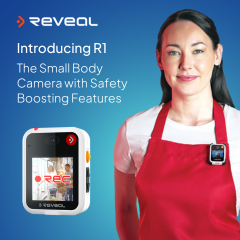Q&A: Matt Furneaux, global commercial director at Loqate, a GBG solution
Loqate provide address verification powered by the most accurate global location data…helping you deliver exceptional experiences to every customer, wherever they are located.
What does your company do?
Loqate is the world’s most trusted data specialist in location intelligence, most notably in the area of address capture and validation. Over 20,000 businesses worldwide use our solutions, including HSBC, ASOS and John Lewis. Our research shows that applying our address capture solution in your forms reduces address entry time by 78%.
What advantage does it add?
Never Miss a Retail Update!Firstly, address capture and validation improve delivery by giving the customers who enter the address and the carriers executing the delivery the most correct version of the address. This process improves delivery rates and gives customers the best experience as their delivery is more likely to be successful. Furthermore, address capture speeds up the journey for any user, be it in a checkout or when filling out a form. It takes as few as three keystrokes to display an address, and this speed also contributes toward a positive customer experience.
How are retailers using your systems to gain competitive advantage and what does best practice look like? Can you share a case study with us?
Getting accurate address data reduces the number of failed deliveries, which can be a problem in the UK, as about 1 in 10 deliveries are unsuccessful on the first attempt. For this reason, having an address capture and validation solution as a part of your checkout journey saves you time and money when it comes to delivery logistics.
Furthermore, having type-ahead address technology also improves form completion rates. A case study with our client Totally Money detailed how they boosted their form completion rate by 2.4%, an increase that amounted to a boost of tens of thousands of pounds in revenue every month.
What challenges and opportunities do you see in UK retail for 2022?
Our most recent report – Future of the Digital Checkout – highlighted the intriguing concept of good friction versus bad friction. For many of us, simple repeat purchases lend themselves to one-click checkouts. However, our research showed that 56% of consumers are happy to encounter more friction when it’s appropriate to what they are buying. Think about how some beauty and fashion brands are using AI-driven personalisation experiences in the shopping journey – you could argue that’s friction, but broadly speaking it helps to drive sales.
Bad friction at the checkout is something entirely different. It can come in the form of too many fields to manually fill in, not enough payment options, and poor UX. It’s here that brands need to keep focused, and over two-thirds of the retailers we spoke to were planning to invest in the checkout experience in the next 12 months. However, how that investment gets used will represent the most significant challenge – retailers need to identify the friction points in a journey that add value versus those that slow down the consumer without any added benefit.
How will you address these challenges and turn them into successes?
Adding friction can ultimately improve how a consumer comes to understand the nature of their purchase. For example, our research has shown that 60% of consumers don’t trust a brand if they feel as though they’re being rushed through a checkout. Therefore, a great way for retailers to build trust with the customers is to build a checkout that addresses concerns such as this and uses them as an opportunity to alleviate these concerns.
What is on the horizon for you as a company?
On-demand delivery is going to be a major consideration moving forward. 31% of consumers are saying that in the future, they want items delivered to wherever they are within minutes, not hours or days. So, for retailers, there is a need to understand and use location data that might not be a physical postal address while also getting the data they need to complete a payment.
What are your predictions ahead of Black Friday?
Apprehension will be the main thing which shapes this year’s Black Friday. Customer concerns over whether their most-desired products will still be in stock by the big day will lead them to start shopping earlier than ever, and brands are equally anxious over whether the stock will indeed exist and if they’ll have enough drivers to get it delivered. For these reasons, we expect to see the increase in eCommerce traffic start earlier than last year.













